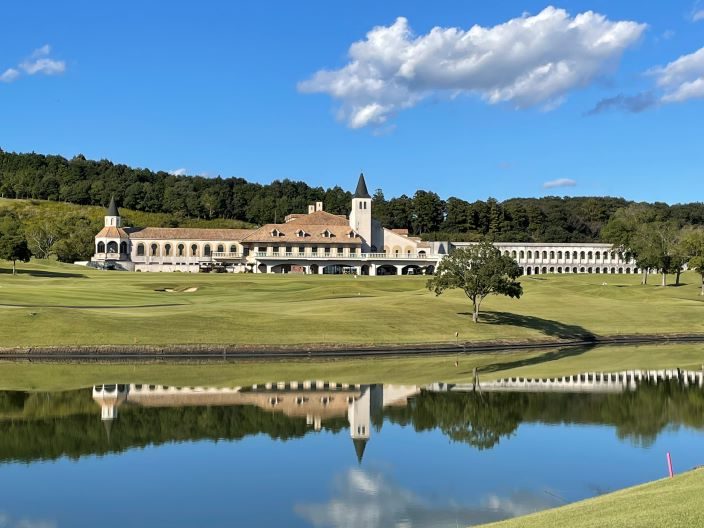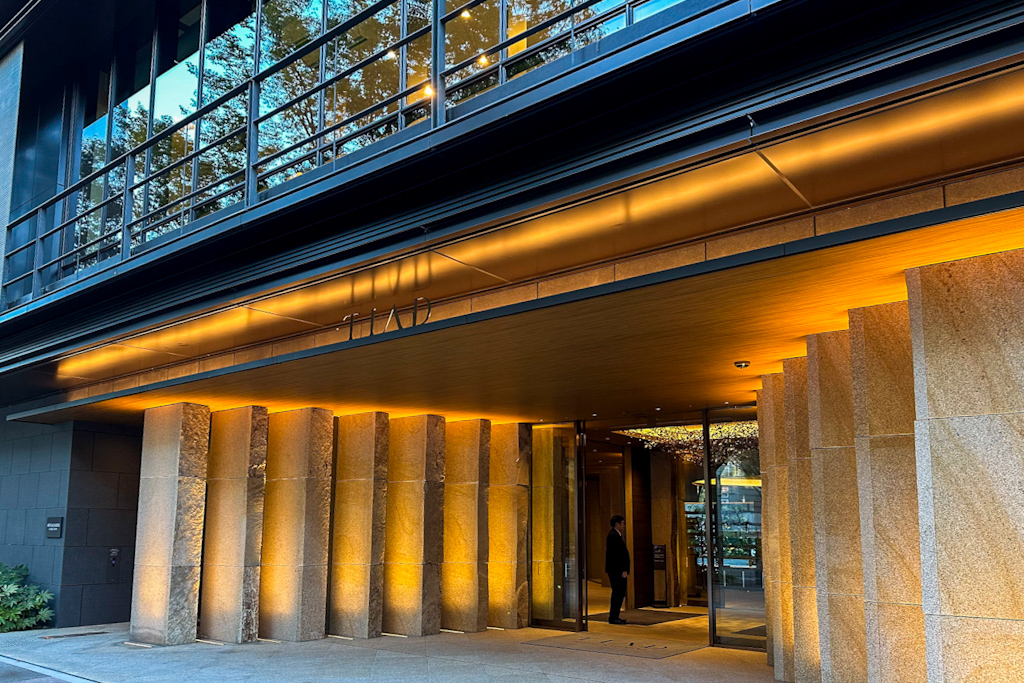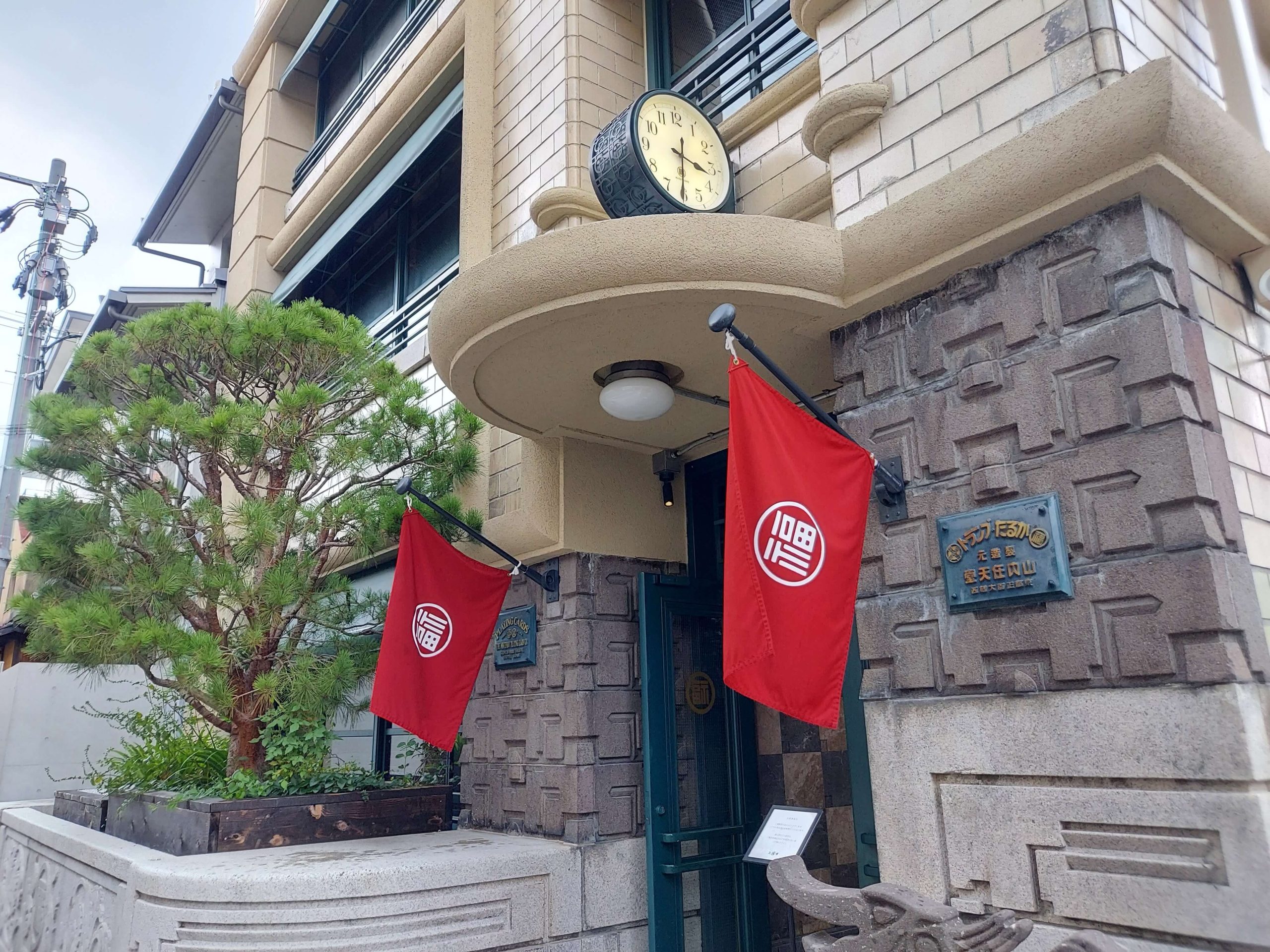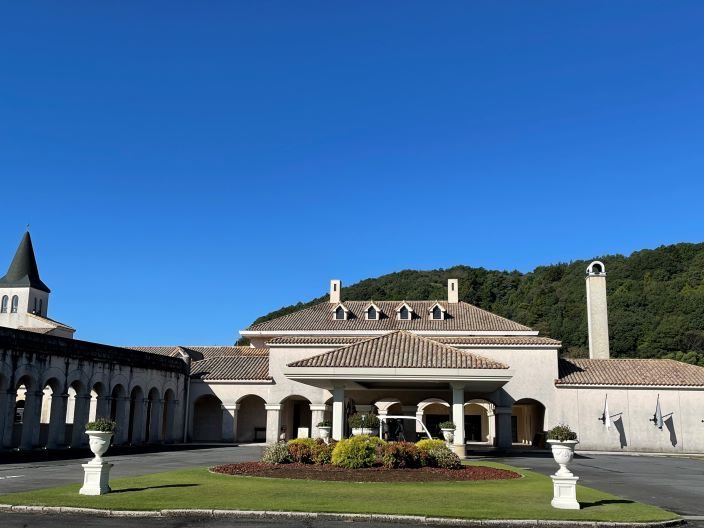
There are many golf course architects who are called geniuses, and Desmond Muirhead is one of them. Born in England in 1924, he studied architectural engineering at the University of Cambridge, then landscape architecture at the University of British Columbia in Canada, and horticulture at the University of Oregon in the United States before becoming a golf course designer.

His most famous work is the Mission Hills CC Dinah Shore Course (1972) near Palm Springs, California. From 2015 until recently, it was the venue for the first major LPGA tournament every spring, the ANA Inspiration (formerly the Kraft Nabisco Championship, renamed the Chevron Championship from 2022). It is also known as the Women’s Masters because it is the only major LPGA tournament held on the same course every year. Also, this tournament was famous for the winner jumping into the pond surrounding the final 18th hole (Poppies Pond), but from 2023 the stage will be moved to “The Club at Carleton Woods” in Texas. I regret not being able to see this famous dive.
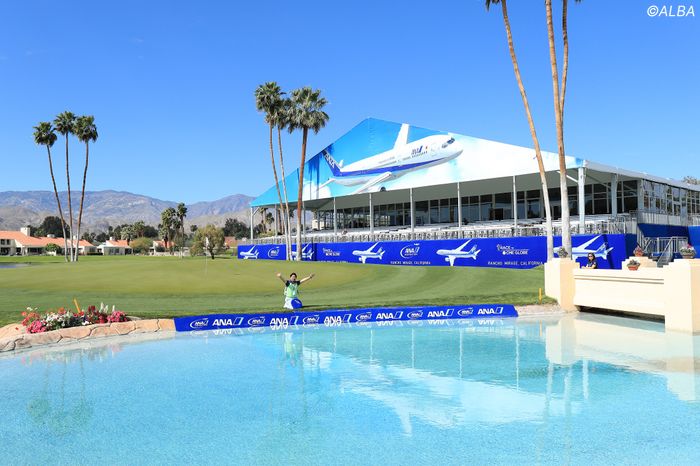
Other Muirhead-designed courses include Muirfield Village (1974) near Columbus, Ohio, a course that is regularly considered one of the best courses in the world and hosted the PGA’s “The Memorial Tournament” co-created with Jack Nicklaus. The tournament is hosted by Nicklaus, a native of Ohio, who himself has won twice. It is held two weeks before the U.S. Open every year and is considered a prelude to the U.S. Open, and Tiger Woods has won the tournament the most times, with five wins. By winning this tournament in 2012, he achieved his 73rd win on the PGA Tour, tying him with Emperor Nicklaus, and it can truly be called a memorial.
Japan’s Hideki Matsuyama won the championship in 2014, but in last year’s tournament he was expected to win for the second time as he entered the final day with a two-stroke difference from the leader, but in the end he dropped his score by four strokes and he finished in 16th place.
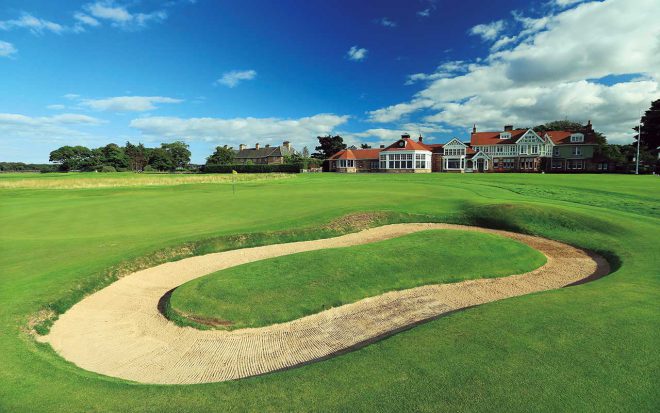
In Japan, we also have New St. Andrews Golf Club Japan (Tochigi Prefecture), which was the first club in Japan to co-create with Jack Nicklaus. The beautiful American-style course is famous as one of the most difficult courses in Japan, with Nicklaus himself saying that it was “designed to be a little too hard.”
Segovia Golf Club in Chiyoda (Ibaraki Prefecture) is also a sophisticated and beautiful course that is in harmony with nature but also has a cultural flavor, overflowing with the original design typical of the genius Muirhead, with the theme of the enchanting country of Spain.
Muirhead himself said, “When I started designing, I was flooded with philosophical, psychological, and artistic ideas that I wanted to incorporate into the course. In particular, I wanted to give each hole its own character and create a course that left a strong impression on players.” We tried to make it enjoyable for everyone from the world’s top players to beginners, depending on their skill level,” he says, and you can really feel that when you play.
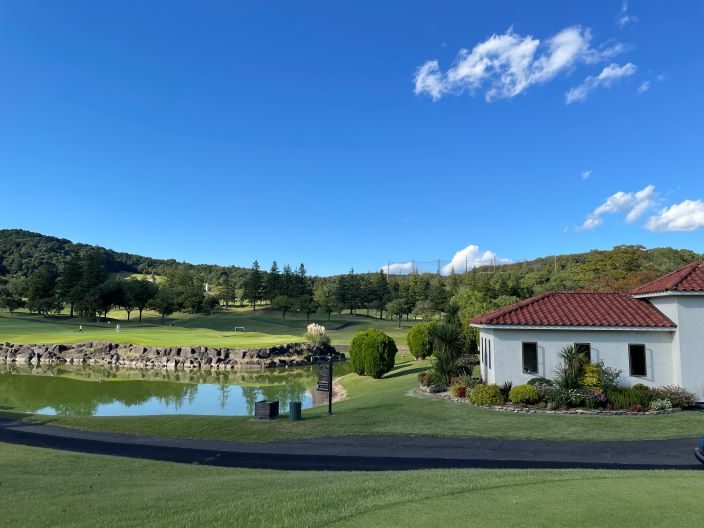
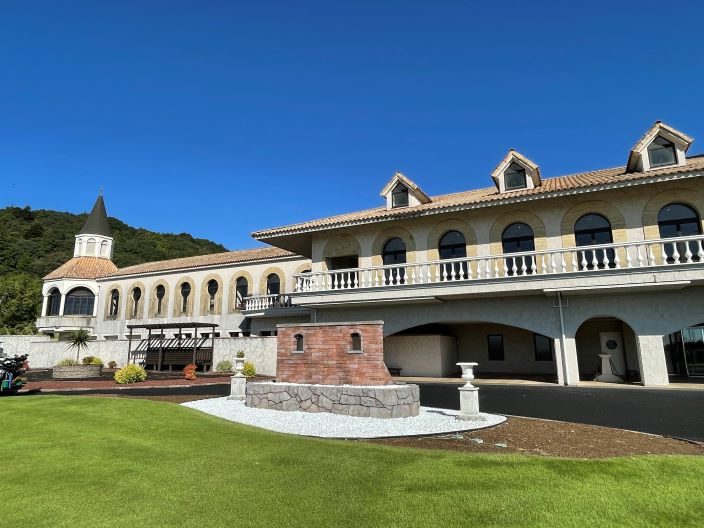
However, although it is a relatively flat hilly course, the unique shapes can sometimes confuse the visual sense, making it a highly difficult course that requires accurate shots and strategy.
It is also a championship course that is used in professional tournaments, with a distance of over 7,000 yards from the full back tees. The greens are bent 1 greens with a course rating of 73.6. A spacious practice area is also available.
The Pacific Tourism Development Group, a medium-sized golf course development company whose parent company was the local Suzuki Ceramic Tile Manufacturing Co., Ltd., put all its efforts into constructing it and opened it in 1993 at the end of the bubble economy, but with the bursting of the bubble economy, a large investment totaling 27 billion yen became a burden. This led to deterioration in management and the company went bankrupt. It was later acquired by the Lone Star Group, an American investment fund, and currently 16 carefully selected courses within the PGM Group are operated as high-end GRAND PGM courses.
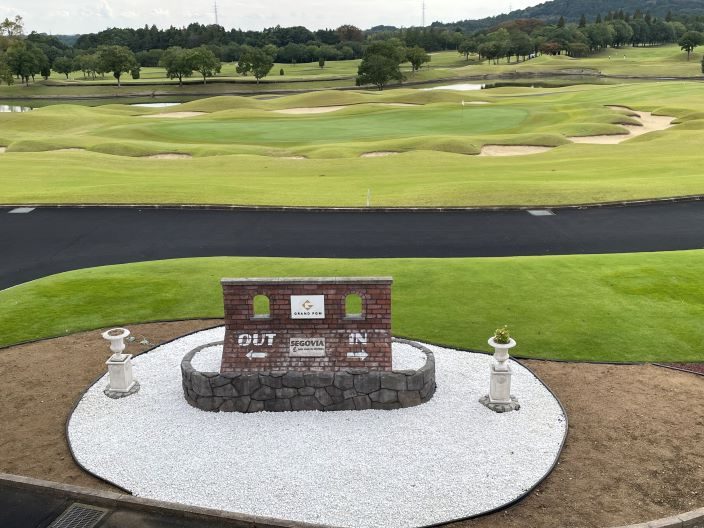
When you arrive at the clubhouse, you can immediately feel the luxurious feel.
The name of the course comes from Segovia, a UNESCO World Heritage Site located approximately 90km northwest of Spain’s capital Madrid, a city dating back to the medieval period of the Kingdom of Castile.
The city’s symbols are the ancient Roman aqueduct built around the 1st century AD and the Alcázar Castle, which was at the forefront of the Reconquista, a movement by Christian countries to recover territory from Muslims.
This majestic and beautiful castle has been selected as one of the “Top 25 Castles of the World” and is said to be the model for the castle that appears in the Disney movie “Snow White.” The clubhouse has a dignified appearance full of exoticism, with motifs of the Alcazar Castle and the aqueduct.
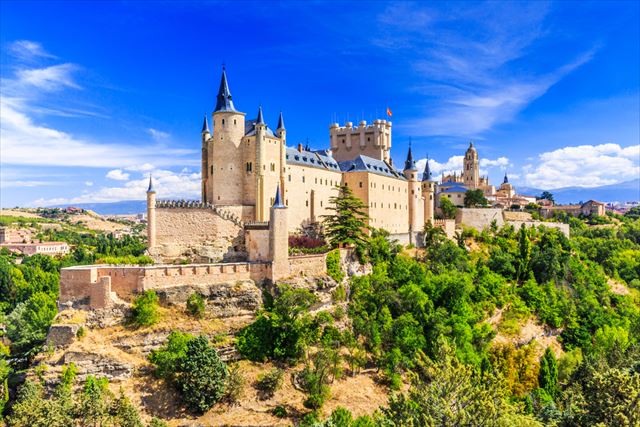
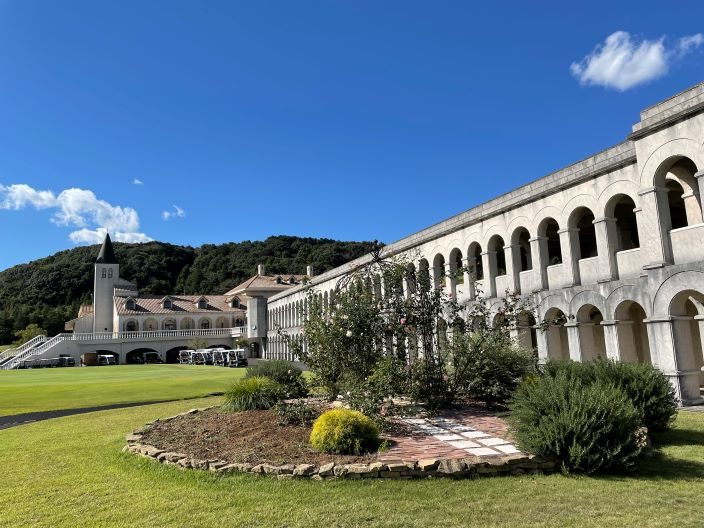
The clubhouse was designed by Alfredo Arribas, a leading Spanish architect and wine maker who is said to be the “genius of Barcelona.” The interior of the restaurant has a high ceiling and an open feel, creating a calming atmosphere. The restaurant has a sophisticated structure that makes extensive use of curved lines that are reminiscent of the influence of the genius Spanish architect Gaudi.
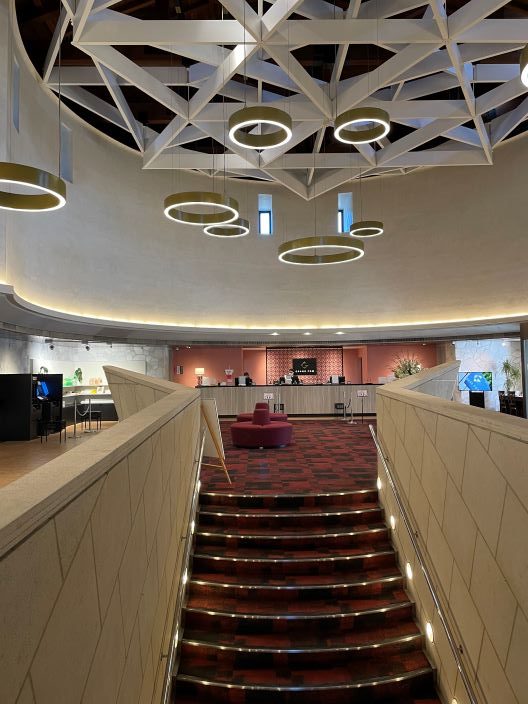
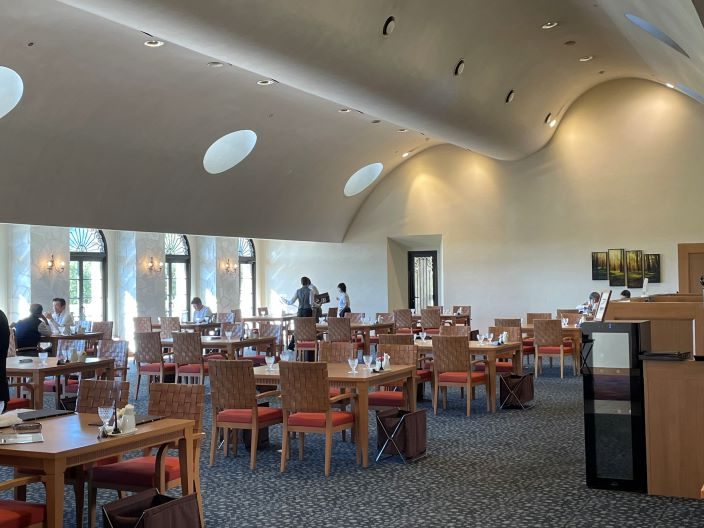
In addition, there is a locker room with a unified wood grain pattern, and a bath with a jacuzzi and sauna that resembles a Roman bathhouse, so you can soothe the fatigue of playing golf.
And there is a VIP service for special guests called a salon. When guests enter through the private parking lot and entrance, they will find their own check-in counter, dining room, lockers, and baths, allowing them to enjoy extraordinary services.
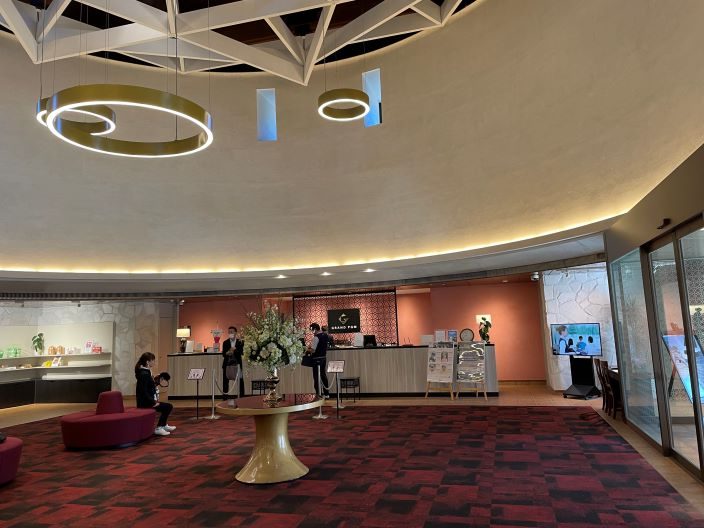
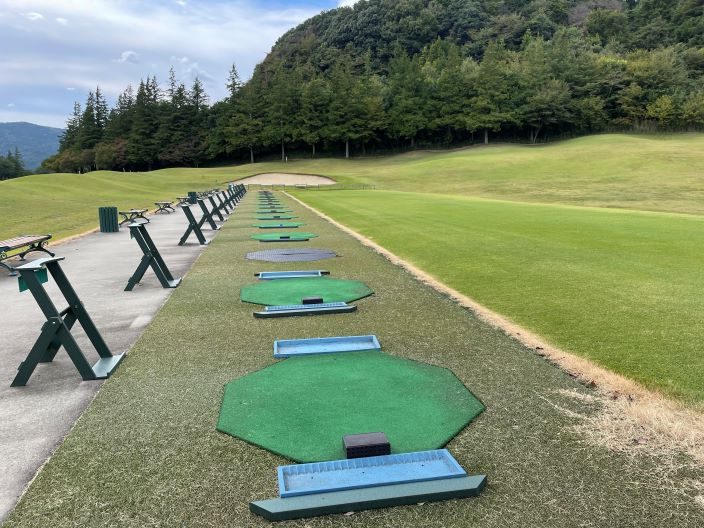
In addition, there is a locker room with a unified wood grain pattern, and a bath with a jacuzzi and sauna that resembles a Roman bathhouse, so you can soothe the fatigue of playing golf.
And there is a VIP service for special guests called a salon. When guests enter through the private parking lot and entrance, they will find their own check-in counter, dining room, lockers, and baths, allowing them to enjoy extraordinary services.
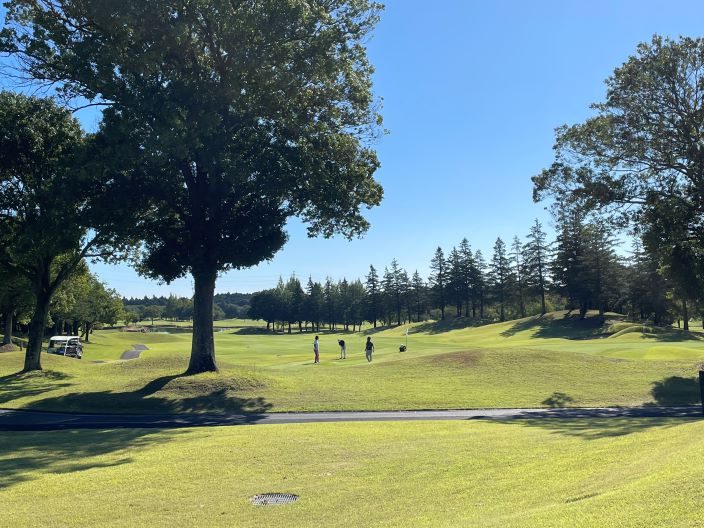
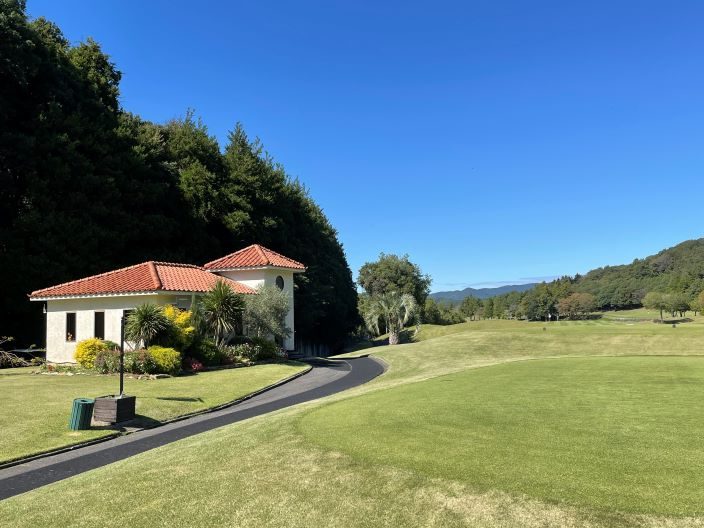
Now, let’s take a look at each characteristic hole.
The theme of the first hole (482 yards, par 5), the prologue to the Spanish story, is called “Flamenco.” The starting hole is a relatively short par 5. At the end of the fairway that gently curves to the left is a green and guard bunker shaped like the fluttering hem of a flamenco dancer’s long dress.
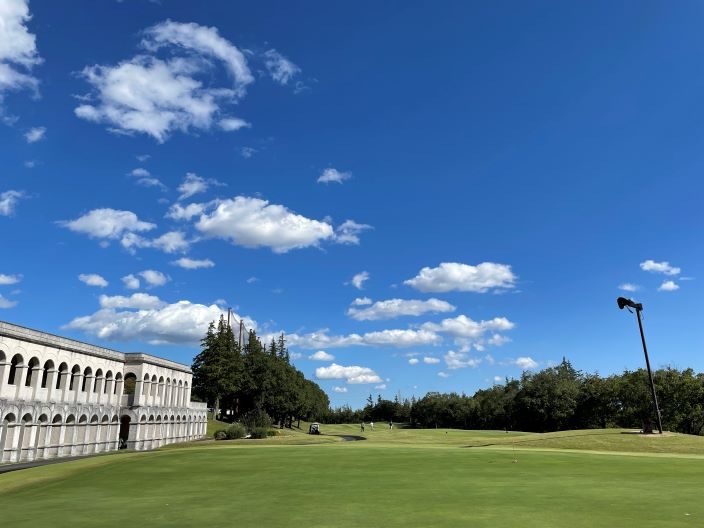
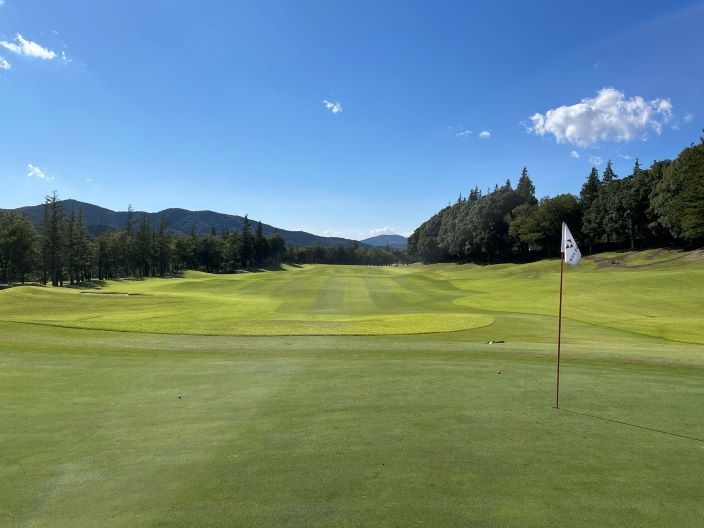
The 2nd hole (397 yards, par 4) is called “Andalusia”. As the course curves to the left, a large bunker inspired by the desert and palm trees of the Andalusia region awaits on the right. Guard bunkers surround the green, which is shaped like an Andalusian hat, a hat unique to the Andalusian region.
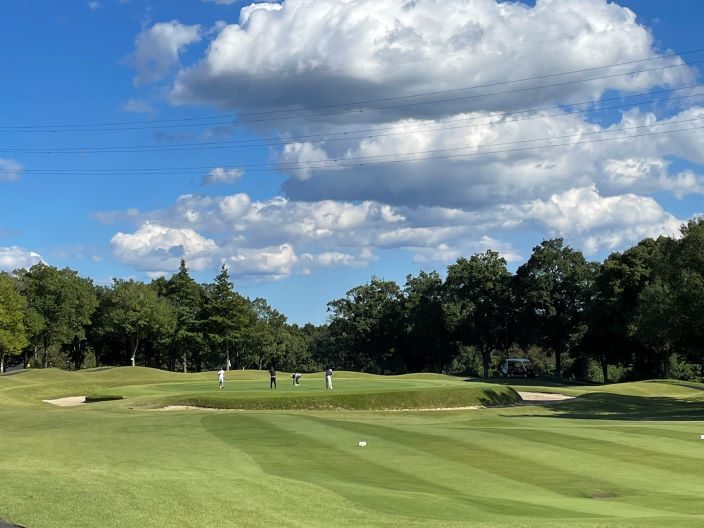

The 3rd hole (152 yards, par 3) is a famous hole named “Guitar”. It was built in honor of Andres Segovia, a famous Spanish guitarist who is known as the father of modern classical guitar playing and who shares the same name as the course. This is a unique and impressive hole where the neck of the guitar is a bunker that goes straight from the teeing area to the green, and the green is the body of the guitar.
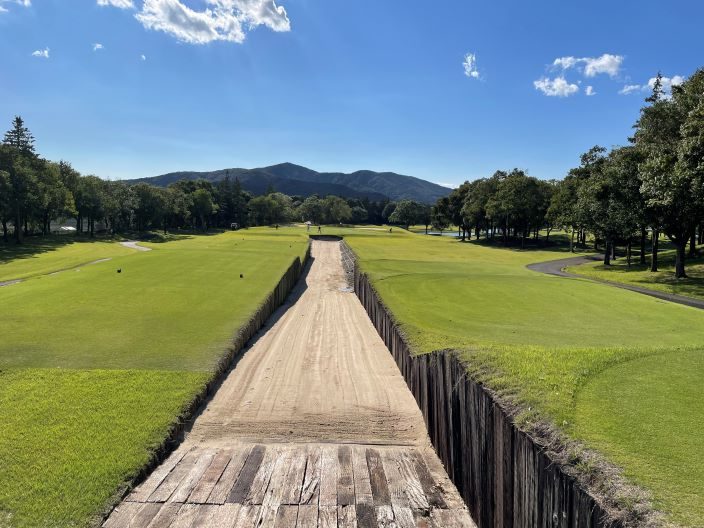

The 4th hole (376 yards, par 4) is a difficult hole where a large pond stretches from the front of the teeing area to the green, making you feel pressured from the tee. The bunkers in the shape of elongated bows and arrows that pierce the greens are inspired by the crossbow, a traditional weapon symbolizing Spain, which is the name of the course.
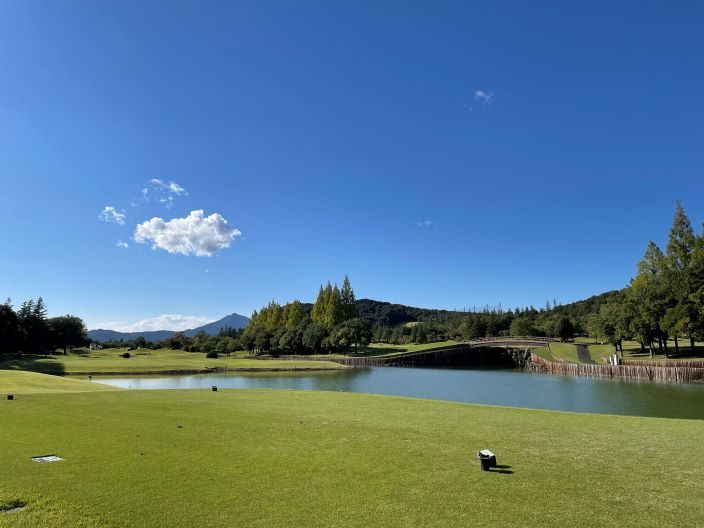
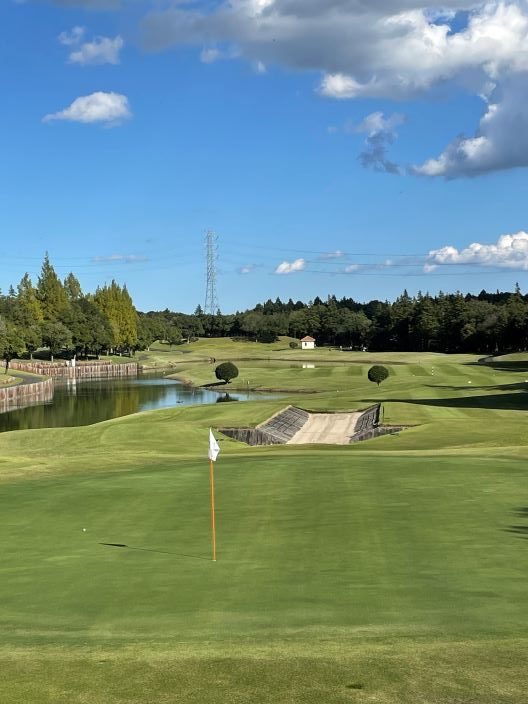
The 5th hole (385 yards, par 4) is based on the famous painting “Guernica” by Spain’s leading painter Pablo Picasso, which depicts the city of Guernica, which was heavily bombed during the civil war.
As with the 4th hole, a pond continues to the right of the fairway all the way to the green, and it is best to aim your tee shot at the peninsula that juts out toward the pond. From there, cross the bridge in the center of the fairway and head to the green. There are large palm-shaped bunkers on both sides of the green, and eye-shaped bunkers in the back that look like they are glaring at the player.
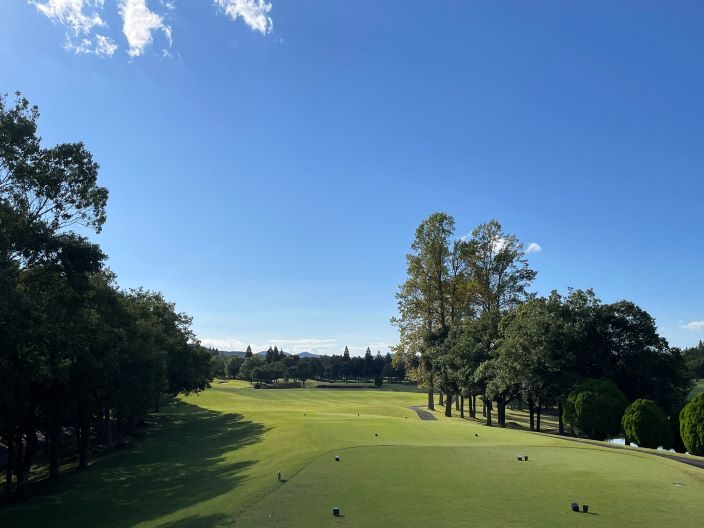
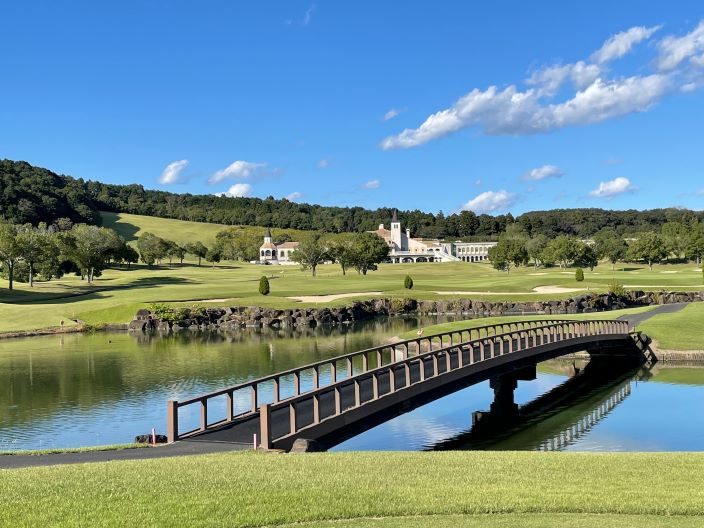
The 6th hole (390 yards, par 4) is named Iberia, and has a pond on both sides, giving the image of a peninsula. At Portugal’s position on the left, there is a long, large cross bunker between it and the pond. This is a difficult hole with a green in front of the pond that juts out into the Mediterranean Sea.
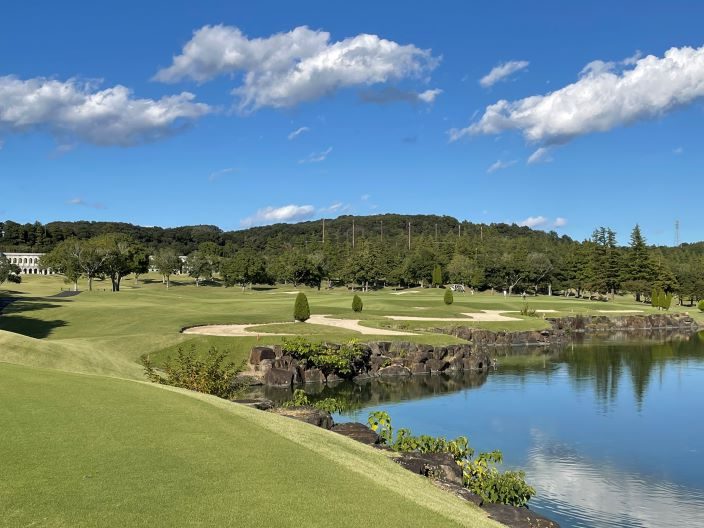
The 7th hole (513 yards, par 5), like the 6th hole, has a pond on both sides of the fairway, which crosses the fairway in the middle, and beyond that, on the left, there is a pond that continues to the green. Furthermore, it is a difficult par 5 hole with a huge guard bunker waiting at the back of the green, making it difficult to understand why it was named Marvela, a tourist destination on the Costa del Sol, which is a famous resort area.
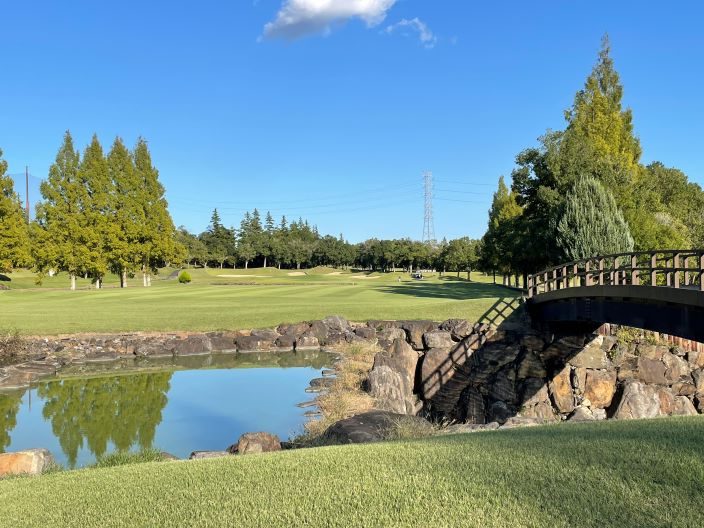
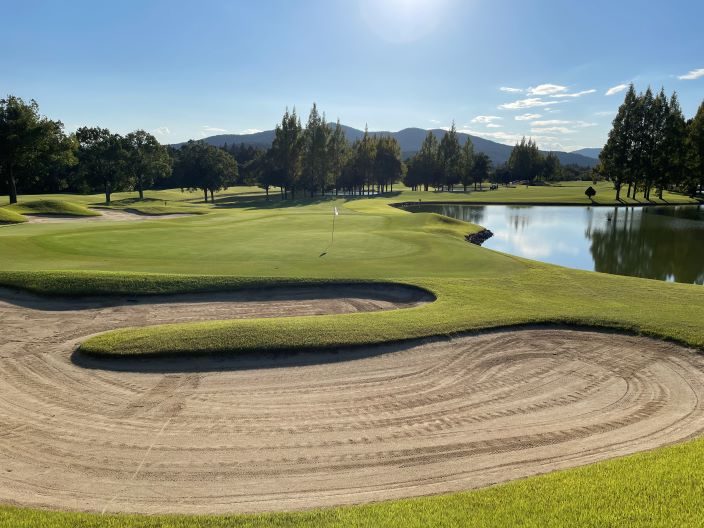
The 8th hole (129 yards, par 3) is a par 3 hole inspired by Miró, one of Spain’s leading surrealist painters. When you look down on the green across the pond from the slightly elevated teeing area, you will see four uniquely shaped bunkers that look like deformed plants, making for a very impressive hole. The green is long and narrow with two tiers, so you need to check the location of the pin carefully before hitting your tee shot.
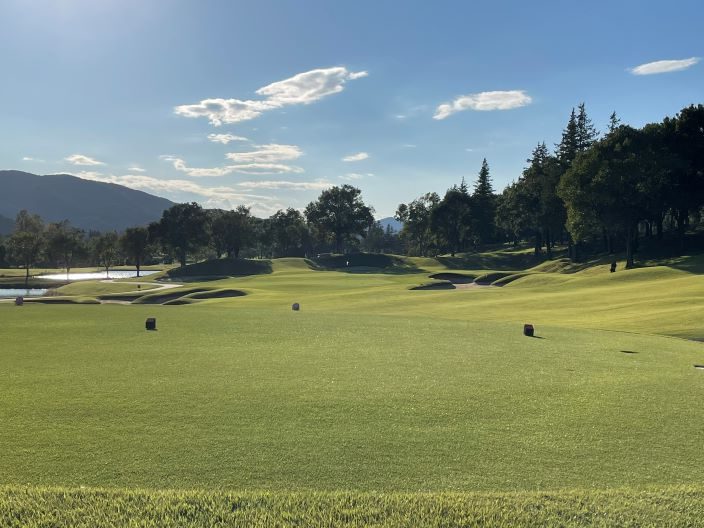
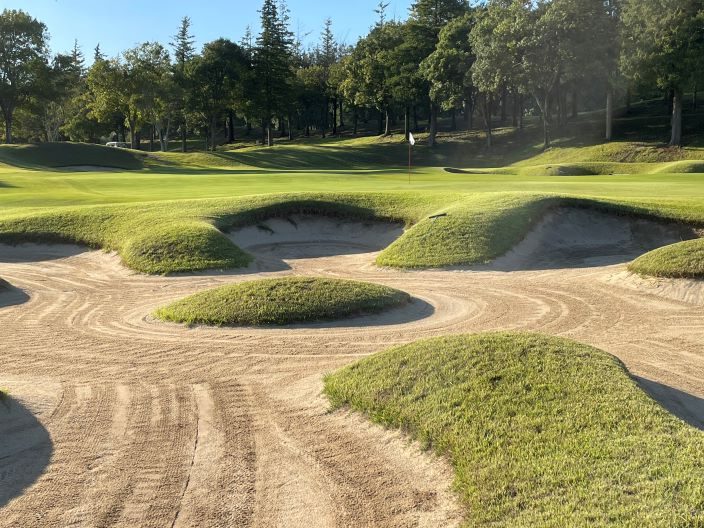
The 9th hole (357 yards, par 4) is inspired by Salvator Dali, a world-famous Spanish painter who represents Cubism and Surrealism. There is a pond on the left side of the teeing area, but once you cross it, a straight fairway continues towards the clubhouse, and I feel that this hole is not as difficult as Dali’s work suggests.

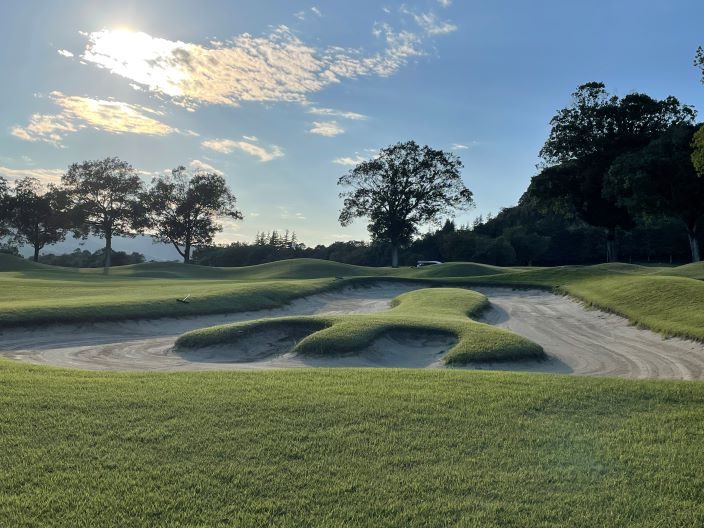
The 10th hole (312 yards, par 4) has a brave name inspired by Spain’s national sport, bullfighting (corrida), but there is no water or large cross bunker as a hazard. However, it is not as easy a hole as it looks, as the fairway and green are so mounded and undulating that there are no flat spots, reminiscent of a bullfighter’s fluttering cloak.
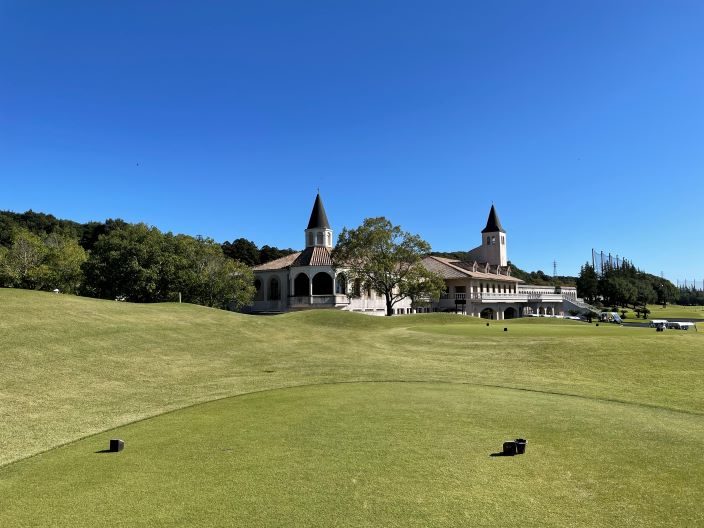
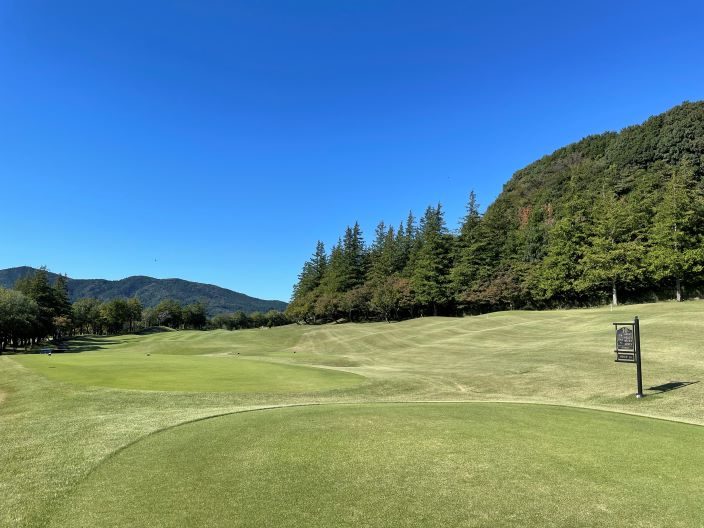
The 11th hole (496 yards, par 5) is named after the Pyrenees, a mountain range on the border between Spain and France. The fairway is narrow from the teeing area to the green, with a pond reminiscent of the Mediterranean on the left and a mountain range-like slope on the right. The green is long and has guard bunkers on both sides, so you need to aim for the pin of the green on your approach shot, which will keep you nervous.
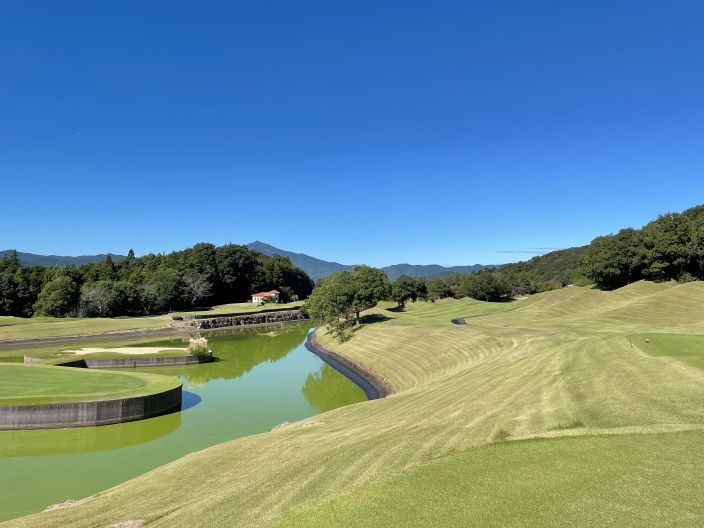
The 12th hole (371 yards, par 4) is named Bullfighter. The teeing area has a large pond on the right and a wide creek on the left, making it easy to hit the fairway accurately with the tee shot. To the left of the green is a guard bunker with a large eyeball-like island, and the green spreads out around the bunker like a bullfighter’s cloak.
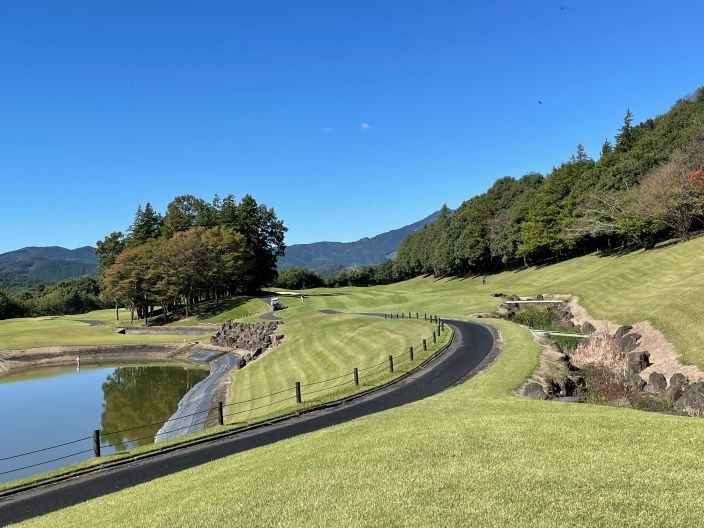
The 13th hole (426 yards, par 4) has a name that means “Oh, it’s gone!”. The green juts out into the pond like a peninsula, so try to avoid that on your approach.
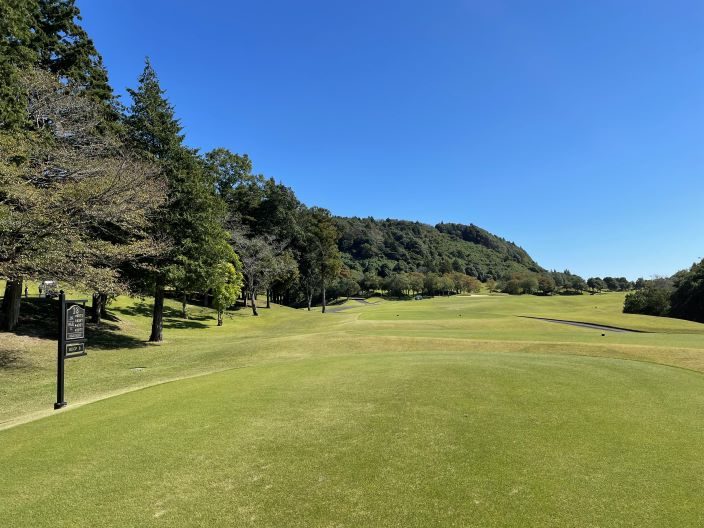
The 14th hole (139 yards, par 3) is a par 3 hole named after one of Spain’s representative dishes, cold soup (gazpacho). This is an impressive hall with two islands floating in the middle of a large pond shaped like a soup. One of the islands is green and the other is a bunker, and each island is connected to the land by a bridge. The green is wide from side to side but narrow from front to back, making it an extremely nerve-wracking hole that requires an extremely accurate tee shot to hit the green.
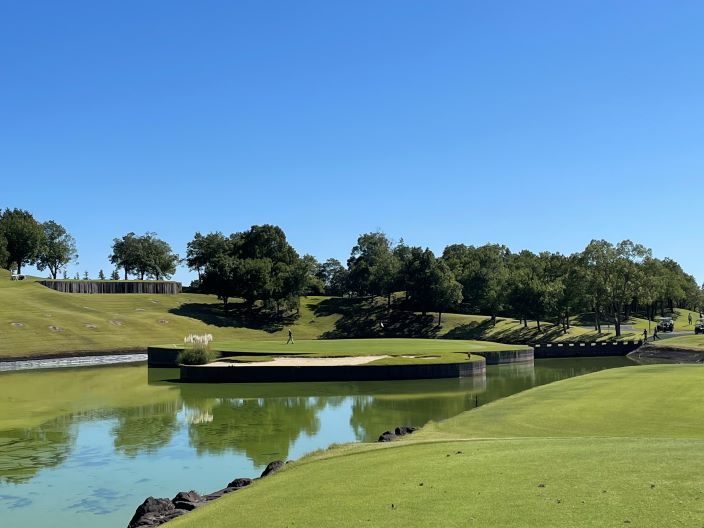
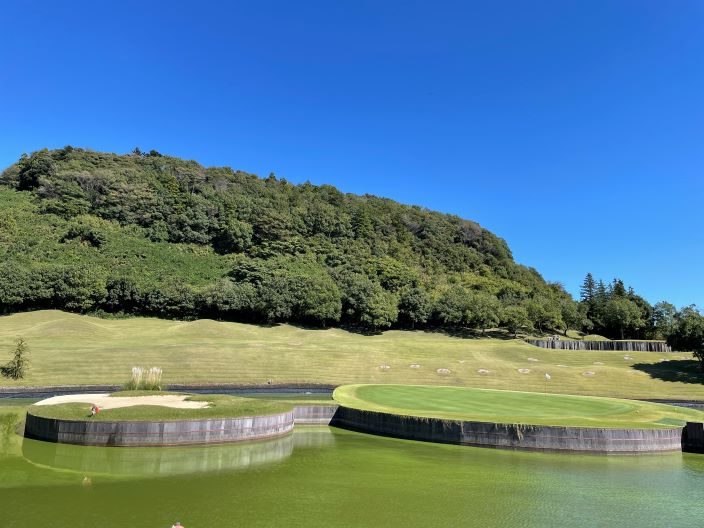
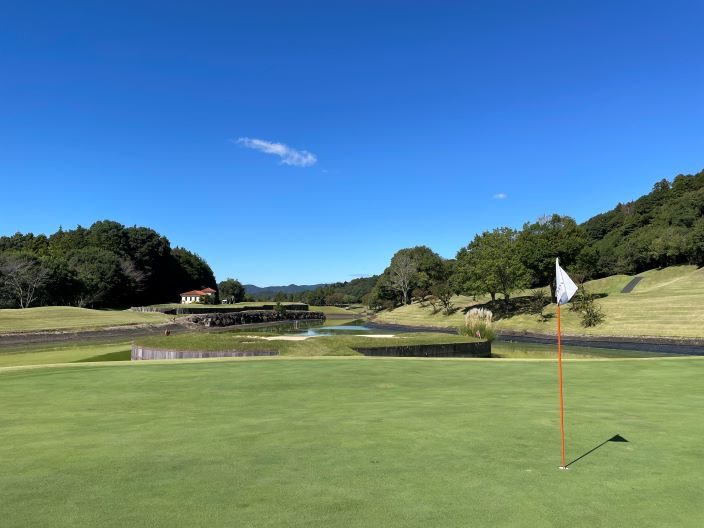
16th hole (314 yards, par 4) This is a beautiful hole inspired by Granada, the city famous for the beautiful Alhambra Palace and home to the last Islamic dynasty on the Iberian Peninsula, which lasted for 250 years. Tall trees are neatly lined up on both sides of the course, and the fairway curves slightly to the left toward the clubhouse, making for a wide and relaxed course.
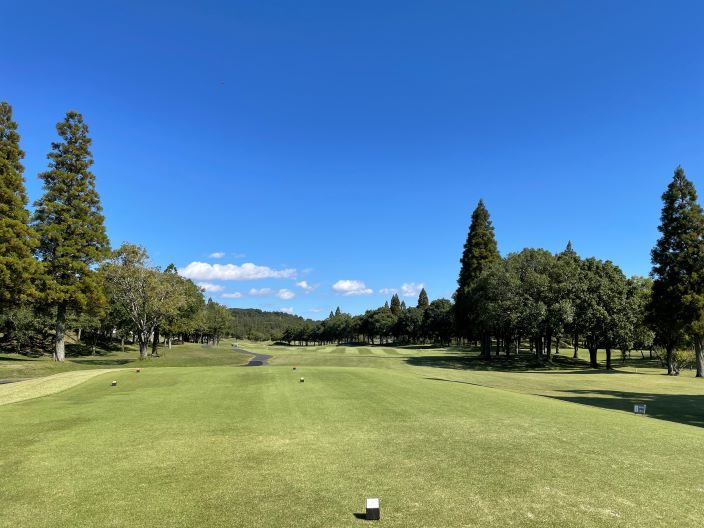
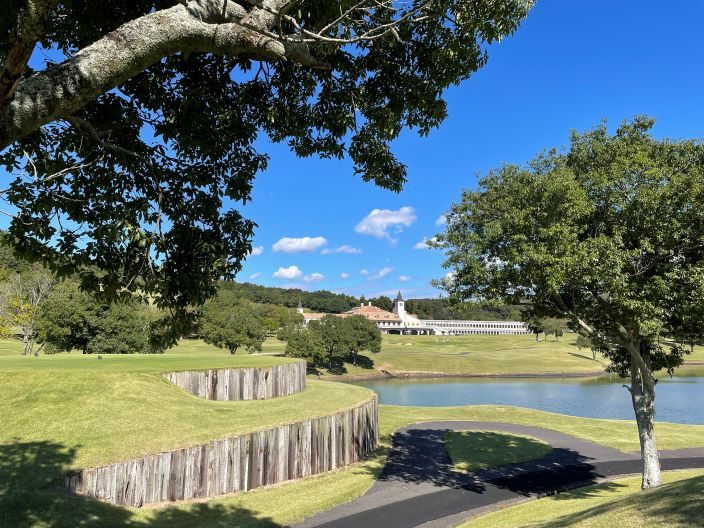
The 17th hole (160 yards, par 3) is a beautiful short hole over a lake that originates from the coastal city of Costa Prava in southern Spain. The green is shaped like a magatama(comma-shaped bead), and on the right side of the green is accented with a pure white sand bunker reminiscent of the coast. There is a pond between the green and the other side of the bunker, so be careful.
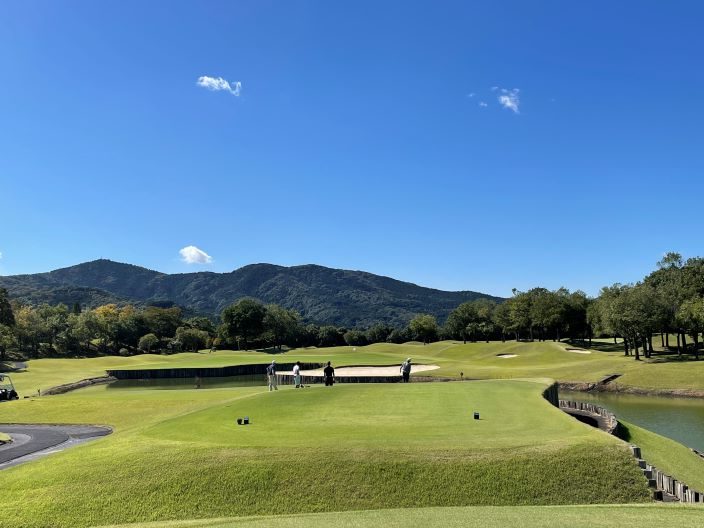
The 18th hole (346 yards, par 4) and the final hole are surprisingly named the dreaded Inquisition, that was considered a heretic in Spain around the 15th century and led to many executions.
A pond stretches from the front of the teeing area to the right, requiring an accurate tee shot. What is most impressive, as if reminiscent of the execution of a heretic, is the huge guard bunker with a unique saw-like shape that surrounds the green in front of the beautiful clubhouse. Everyone wants to somehow escape the execution by the heretic referee, finish playing comfortably, and return to the clubhouse.
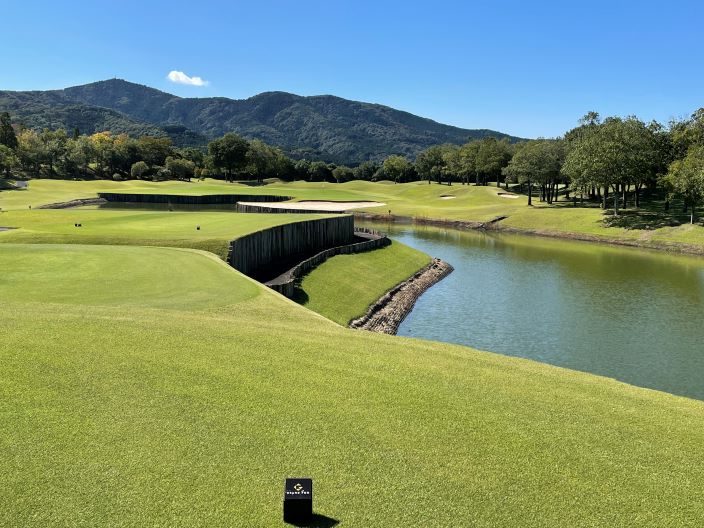
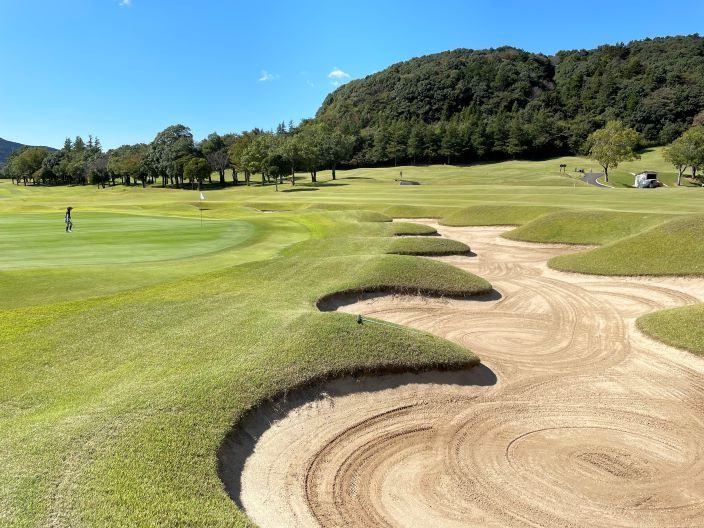
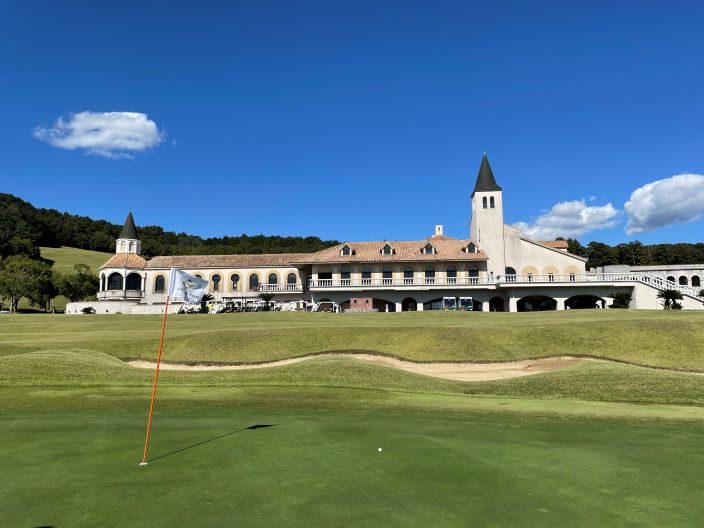
However, is there ever a unique golf course that is so full of stories?
Enjoy thrilling play while enjoying the beautiful scenery that takes advantage of nature and the exotic and unique world view of “Spain, the land of enchantment”.
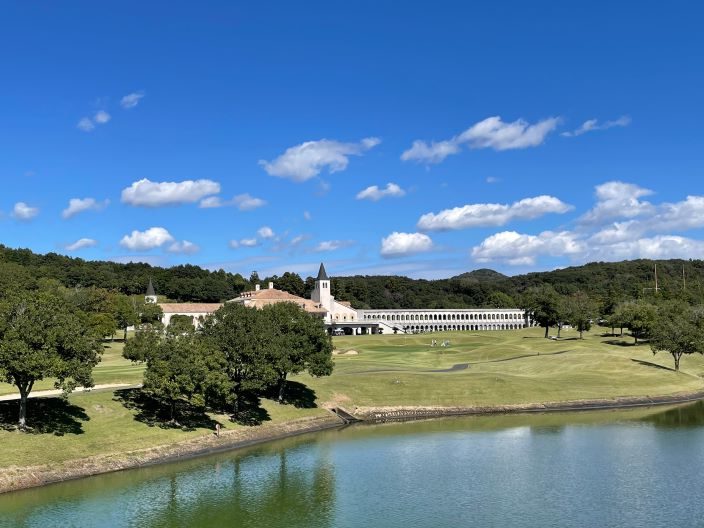
The course is well-maintained and the employees provide excellent service, and the beautiful facilities such as the restaurant, locker room, and bathrooms make it a pleasant place to play.
There is also a spacious practice range next to the clubhouse, as well as a full restaurant menu and pro shop.
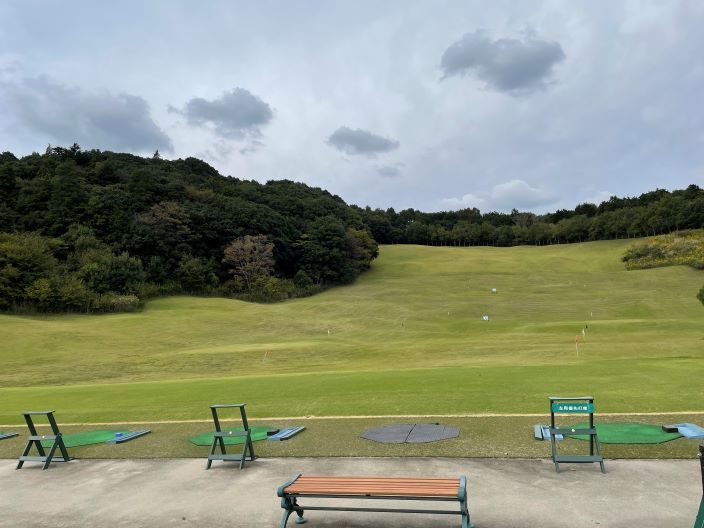
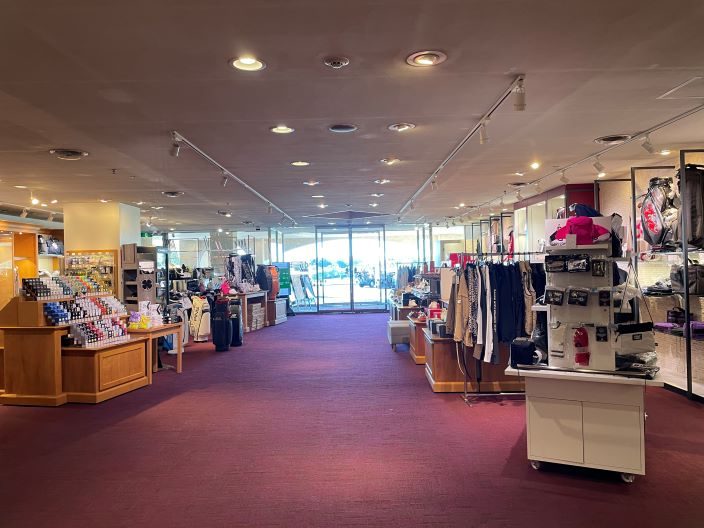

Access is approximately 90 minutes to the Chiyoda Ishioka Interchange on the Joban Expressway, and approximately 5km from the interchange. It is also possible to get there in about 10 minutes by taxi from Ishioka Station, which is about an hour by express train on the JR Joban Line from Tokyo Station.
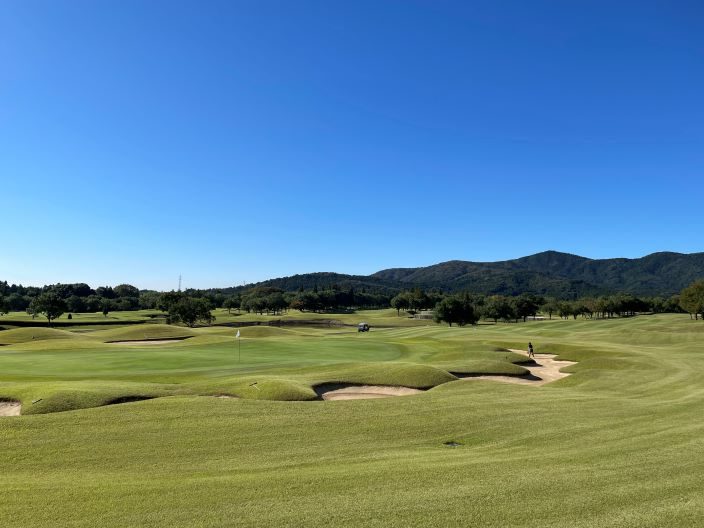

Segovia Golf Club in Chiyoda
| Address | 1384 Takakura, Kasumigaura city, IBARAKI |
| TEL | +81-299-22-6000 |
| Website | https://www.pacificgolf.co.jp/segovia/ (Japanese ONLY) |

